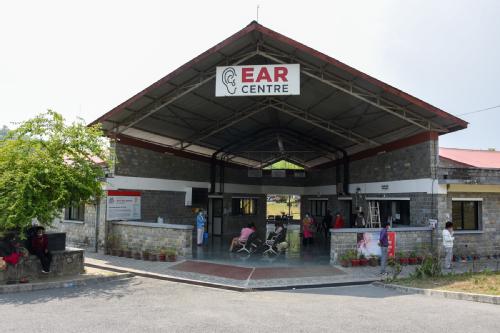Low-cost hearing aid development for low-middle income countries
Overview of the Project
This project will provide affordable and appropriate hearing aid technology and novel healthcare pathways that will help to address the needs of the 466m people estimated to suffer from Disabling Hearing Loss (DHL). The benefits to those with DHL will be enhanced social integration, greater access to mainstream education, improved career prospects and a greater likelihood of financial independence.
At the present time the incidence of hearing loss in low-middle income countries is approximately two to three times that in high-income countries and the World Health Organisation predicts that by 2030, hearing loss will become the world's 7th highest burden of disease ahead of HIV, neonatal infections and diarrheal disease.
Research Objectives of the Low-cost Hearing Aid Development
The project, with an initial focus on Nepal, aims to produce "Affordable High-Quality Hearing Aids for low-middle income countries" in collaboration with the INF (International Nepal Fellowship) Ear Hospital in Pokhara, Nepal.
This research project has three main aims:
1) To develop a hearing aid that meets the World Health Organisations target unit cost for low-middle income countries of 3% GDP/capita and satisfies NHS clinical standards
2) To develop fitting protocols suitable for use by Ear Care Practitioners at the INF Ear Hospital in Pokhara, Nepal, procedures that are congruent with the availability and skills of clinical staff in low-middle income countries.
3) To expand hearing aid services to more geographic regions in Nepal and in particular rural communities.
Hearing Aid Trial in Nepal
The new hearing aid will be trialed in Nepal, at the Ear Centre, Green Pastures Hospital in Pokhara, which is operated by our partners INF. There will be approx. 50 patients, with hearing loss and who have never worn a hearing aid before, who will be fitted with the new aid and the performance assessed a few weeks later.
It will be starting in December 2022 and full results will be expected in 2023.

The Hearing Aid
The project aims to develop the world's first hearing aid that meets both the World Health Organisations target unit cost (3% of GDP/capita) for low-middle income countries and the UK NHS clinical standards. Hearing aid chipsets (the internal chip that makes the hearing aid work as it should, with all of its functions) accounts for approximately 90% of the total cost of a hearing aid. The novel approach taken by the Warwick team has been the re-purposing of chipsets recently developed for ultra-low power implementation of 'always on' artificial intelligence algorithms. When combined with proprietary algorithms these new generation of chips are now sufficiently advanced to be capable of competing with specialist 'Application Specific hearing aid chips' at reduced cost – creating an approx. 10-fold reduction in cost.
The hearing aid has been developed with a rechargable battery and is stored in the charging unit, so preventing the need to be finding and purchasing the right batteries for the hearing aid, aiding continuous use.
The Team
- Prof. Nigel Stocks - Warwick School of Engineering, University of Warwick
- Dr. Alexander Nikitin - Warwick School of Engineering, University of Warwick
- Dr. Mike Smith - INF / Green Pastures Hospital, Nepal
- Thakendra Chand - INF / Green Pastures Hospital, Nepal
- Dr. Michael Stone - Manchester Centre for Audiology and Deafness, University of Manchester
- Helen Whiston - Manchester Centre for Audiology and Deafness, University of Manchester
- Melanie Lough - Manchester Centre for Audiology and Deafness, University of Manchester
- Clare Roberts - Warwick Business School, University of Warwick
- Dr. Yogesh Neupane - TU Teaching Hospital, Nepal
What Next?
Once the efficacy of the technology is fully established, upscaling and expansion to other low-middle income countries is expected.
